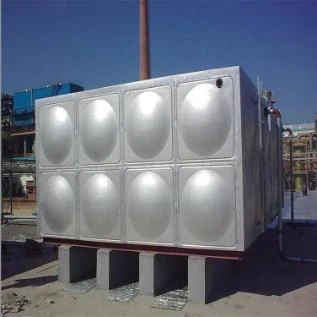loading...
- No. 9, Xingyuan South Street, Dongwaihuan Road, Zaoqiang County, Hengshui, Hebei, China
- admin@zjcomposites.com
- +86 15097380338
- Welcome to visit our website!
Exploring the Benefits and Applications of FRP U Channels in Construction Industry
Understanding FRP U Channel A Versatile Solution for Modern Construction
Fiber-Reinforced Polymer (FRP) U Channels have emerged as a significant innovation in the construction and materials industry, owing to their unique properties and versatility. This article will explore what FRP U Channels are, their key advantages, applications, and why they are becoming increasingly popular in various sectors.
What is FRP?
FRP, or Fiber-Reinforced Polymer, is a composite material made from a polymer matrix reinforced with fibers, typically glass, carbon, or aramid. This combination results in a lightweight, high-strength material that offers excellent corrosion resistance and durability. U Channels, or U-shaped beams, are structural components commonly used in construction, scaffolding, and other applications.
The Design of FRP U Channels
FRP U Channels are designed in a U-shaped profile that provides structural support while allowing for modular assembly and versatility in design. The U shape offers better load distribution and stability, making them suitable for various applications, including structural support, framing, and impact resistance.
Key Advantages of FRP U Channels
1. Corrosion Resistance One of the most significant advantages of FRP U Channels is their resistance to environmental factors, such as moisture, chemicals, and UV radiation. Unlike traditional materials like steel or aluminum, FRP does not corrode, which makes it ideal for use in harsh environments, such as marine applications or chemical plants.
2. Lightweight FRP materials are considerably lighter than metals, reducing transportation and installation costs. This characteristic also makes them easier to handle on-site, allowing for quicker assembly and less labor-intensive processes.
3. High Strength-to-Weight Ratio The strength provided by the fibers within the polymer matrix gives FRP U Channels a remarkable strength-to-weight ratio. This allows engineers to design structures that can withstand significant loads while minimizing the overall weight of the materials used.
4. Low Maintenance Due to their durability and resistance to corrosion, FRP materials require significantly less maintenance compared to conventional materials, leading to long-term cost savings.
frp u channel

5. Thermal Insulation FRP offers good thermal insulation properties, making it a favorable choice for applications where temperature regulation is critical.
Applications of FRP U Channels
FRP U Channels are being utilized in various industries, including
- Construction Used for structural components, support systems, and frames. Their lightweight nature is especially advantageous in elevated construction projects.
- Transportation Employed in railways and roadways where weight reduction is crucial for efficiency and fuel savings.
- Marine Due to their corrosion resistance, FRP U Channels are often used in docks, ships, and other offshore structures.
- Electrical and Communication Utilized in supporting cables and conduits, FRP U Channels are effective in preventing electromagnetic interference.
- Industrial Adaptable for use in manufacturing processes, storage solutions, and platforms where traditional materials may fail due to chemical exposure.
Conclusion
FRP U Channels represent a significant advancement in construction materials, offering a combination of durability, strength, and versatility. As industries continue to seek solutions that enhance efficiency and reduce long-term costs, the adoption of FRP U Channels is expected to grow. With their unique properties and applications, it's clear that FRP U Channels will play a crucial role in the future of construction and manufacturing, making them an essential consideration for engineers and project managers worldwide.
-
Transform Your Spaces with FRP Grating SolutionsNewsNov.04,2024
-
The Versatility and Strength of FRP RodsNewsNov.04,2024
-
The Excellence of Fiberglass Water TanksNewsNov.04,2024
-
The Benefits of FRP Grating for Your ProjectsNewsNov.04,2024
-
Elevate Your Efficiency with FRP Pressure VesselsNewsNov.04,2024
-
Welcome to the World of FRP Pressure VesselsNewsOct.12,2024
-
Unveiling the Future of Filtration: Why FRP Filter Vessels are a Game ChangerNewsOct.12,2024
